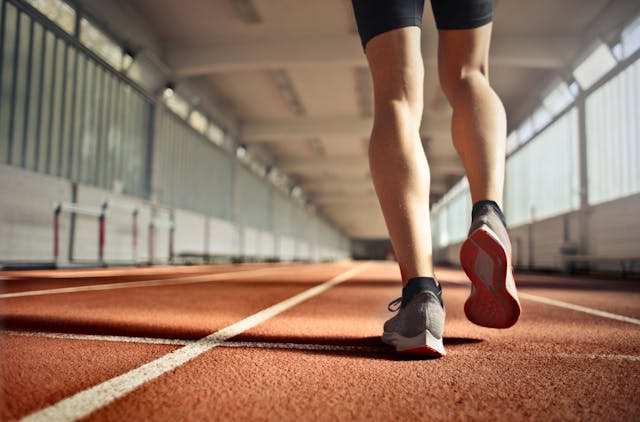It is normal to experience the onset of aging symptoms as time passes. The most basic of everyday activities can become a struggle when you have weak muscles, aching joints, and poor balance. But what if we told you that you could fight these aging effects and keep your vigor far into old age?
Presenting the five longevity exercises that will leave you feeling rejuvenated, powerful, and pain-free—all without breaking the bank on gym subscriptions or specialized equipment. Top physical therapists prescribe these functional movements to help you maintain your independence, vitality, and activity level as you age. They focus on the regions that often decline with time.
Functional Fitness: The Secret to Healthy Aging
According to the experts, functional fitness is the most important aspect of exercise for a long life. This entails conditioning your muscles to carry out the motions you use on a daily basis, such as bending, twisting, lifting, and maintaining your balance. You can maintain your mobility, avoid falls, and keep doing the things you enjoy by strengthening the muscles and joints that are responsible for these vital processes.
“If an exercise yields an adaptation that helps someone become better able to do what they need to do, then it’s functional,” says Ryan Chow, DPT, founder of Reload, a physical therapy and fitness practice. “Function is defined as ‘useful,’ ‘purposeful’ – stuff like bending, twisting, lifting, loading, pushing, pulling, squatting, and hauling.”To rephrase, functional fitness is not about powerlifting or running a marathon. Achieving a state of effortless strength, flexibility, and balance is the goal. The most exciting aspect? You won’t even need to leave your house to accomplish it all.
The 5 Longevity Exercises to Try Today
Are you prepared to put an end to the effects of aging and experience better health than before? You should expect to feel revitalized after including these five functional workouts in your weekly regimen.
- Isometric Split Squat: Improving one’s stability and mobility are the primary goals of this workout.
- Maintain a balance by standing with your feet shoulder-width apart and your knees bent at a 90-degree angle for as long as you can—try to aim for two minutes.
- If you find that 90 degrees is too low, try slightly raising your posture or using a solid item as a light stand.
- Supported Deep Squat: Build lower body strength and mobility with this squat variation.
- Stand in front of a closed door, feet slightly wider than hip-width apart. Grab the door handle for leverage as you slowly bend your knees to lower into a deep squat, taking 5 seconds to get there.
- Pause for 1 second at the bottom, then push through your heels to return to standing, taking another 5 seconds.
- Keep tension on the door handle to engage your upper body and maintain proper form.
- Wall Sit with Heel Raise: This exercise targets the often-overlooked soleus muscle and Achilles tendon, which are crucial for shock absorption and springy movement.
- Stand with your back against a wall, then walk your feet out until your knees and hips are bent at 90 degrees.
- Raise your heels off the ground without moving anything else, and hold for 60 seconds.
- Once you master the basic wall sit, try holding it on one leg at a time.
- Bat Wing: Strengthen the upper back muscles that keep you upright and prevent slouching.
- Stand with your hands behind your head, elbows out wide. Engage your lats to pull your elbows down and in toward your sides, squeezing your shoulder blades together. Hold for 5 seconds.
- Keep your chest lifted and avoid crunching inward as you bring your elbows down.
- Beast Crawl: This full-body move trains your shoulders, core, legs, and – most importantly – your toes.
- Start in a tabletop position on your hands and knees, with your toes tucked under.
- Engage your core to lift your knees off the ground, then crawl slowly forward, backward, and side to side for 30 seconds, keeping your knees elevated the entire time.
- Focus on keeping your back flat and hips parallel to the ground.
The Key to Longevity: Consistency and Variety
Although these five exercises offer a solid foundation, maintaining a consistent and varied exercise routine is the true key to a healthy aging process. “The mounting evidence suggests that [following the physical activity guidelines of 150-300 minutes of moderate to vigorous aerobic exercise and 2 days of strength training per week] can reduce all causes of mortality by 40 percent,” Dr. Chow asserts. “Maybe more importantly, reaching these guidelines is also giving you [greater] quality of life.”
Moving in a certain way is more important than simply moving at all. The significance of varying your exercises is stressed by Ingrid Clay, CPT, a trainer on the Centr app for individualized coaching. “Doing both resistance training and cardiovascular training can keep your metabolic and cardiovascular systems healthy, while maintaining the health and function of your muscles and joints so that you can be able-bodied as you get older,” according to her. While going for a walk or attending a yoga class regularly is a terrific first step, you should also include strength training, balance exercises, and even short intervals of intense cardio to keep your muscles and cardiovascular system challenged. In the long run, you’ll be grateful.
Reclaim Your Vitality and Independence
There may be no such thing as a fountain of youth, but these five longevity exercises will help you slow down the aging process and keep your strength, mobility, and independence for a very long time. Your physical well-being and overall quality of life will be much enhanced as you age if you make functional fitness a top priority and vary your exercise routine. Therefore, why hesitate any longer? Gather a solid chair, make some room, and get ready to experience a renewed sense of youth, strength, and vitality. Do this for the benefit of your mind and body.


Pingback: The Most Consumed Manufactured Drink in the World? - Wellness Readers Digest